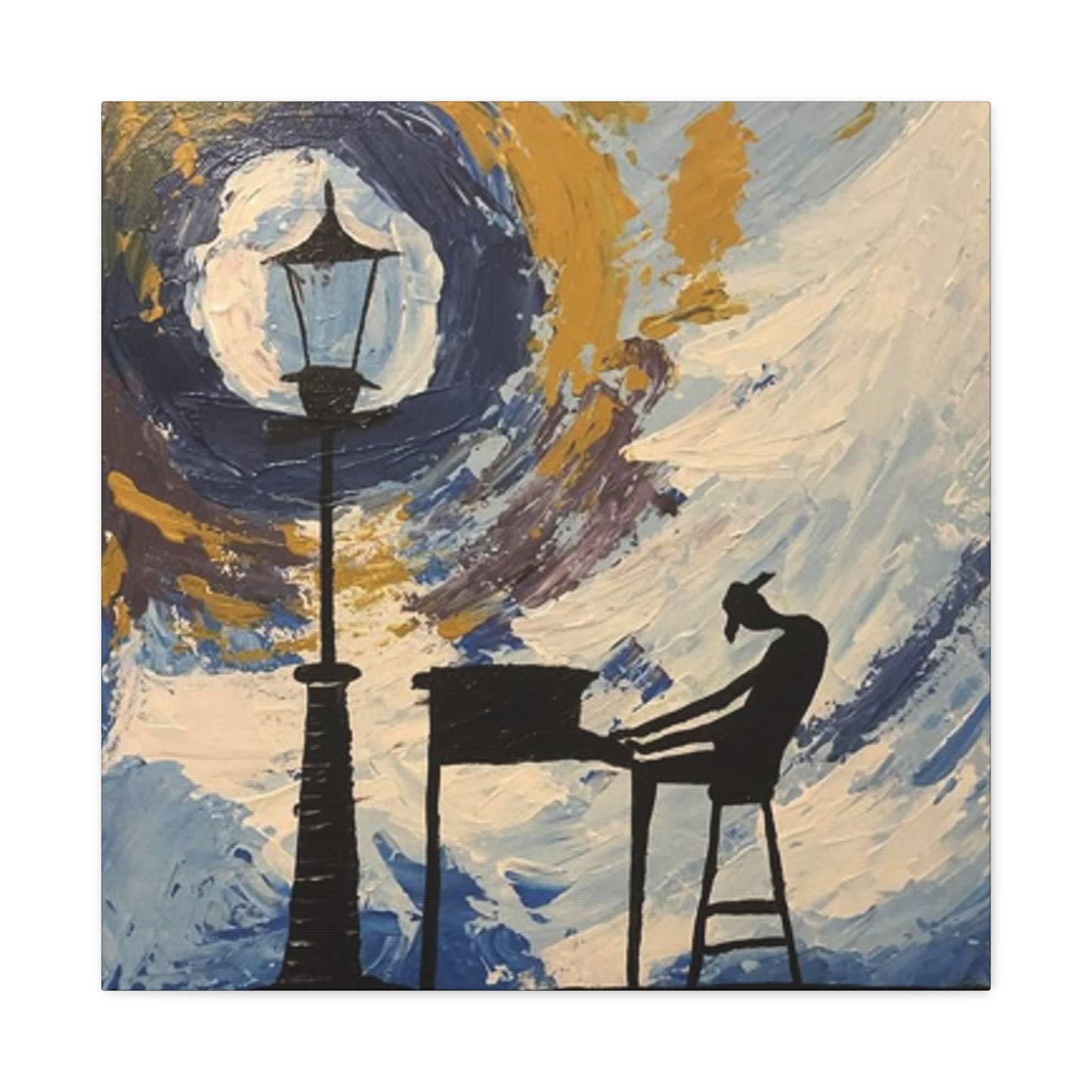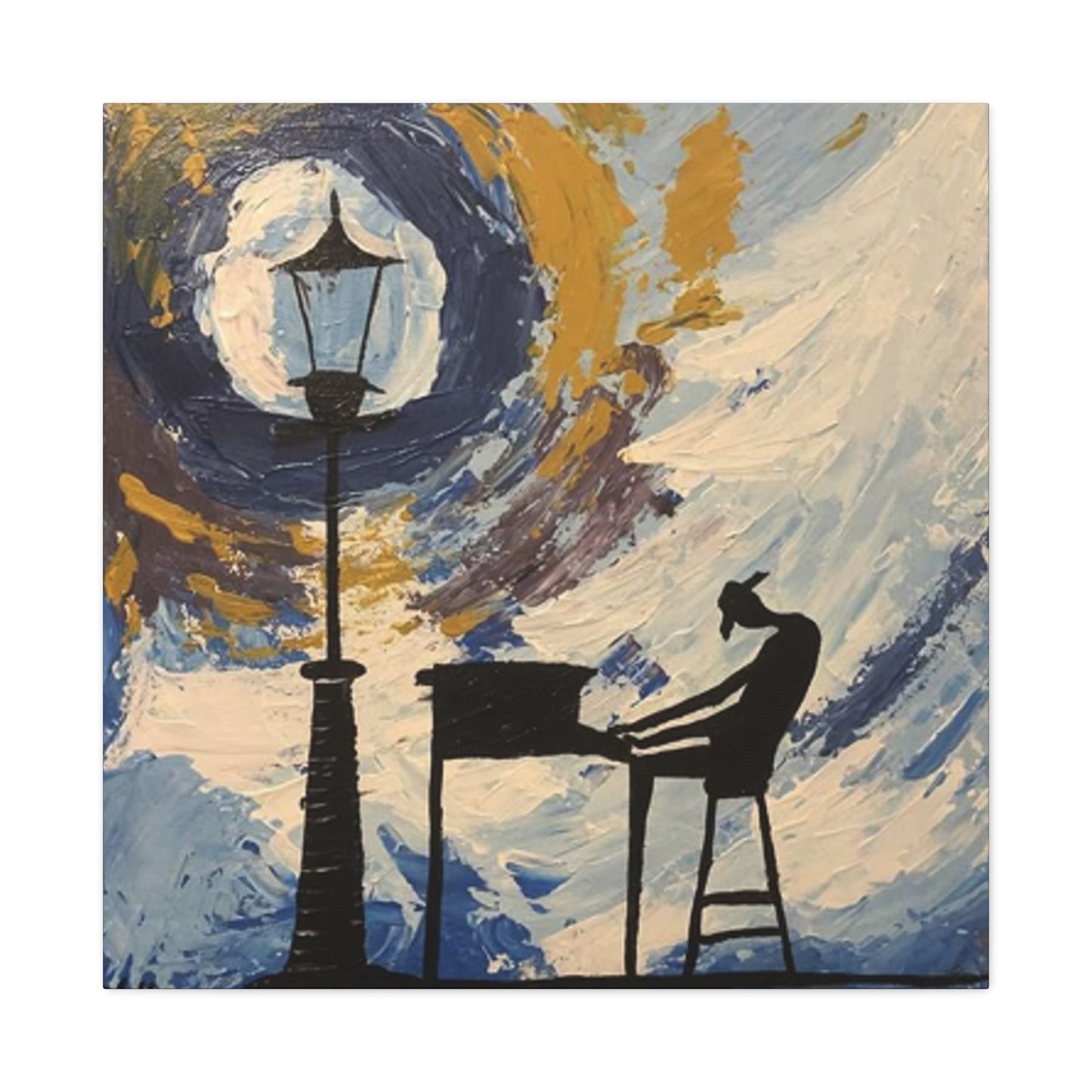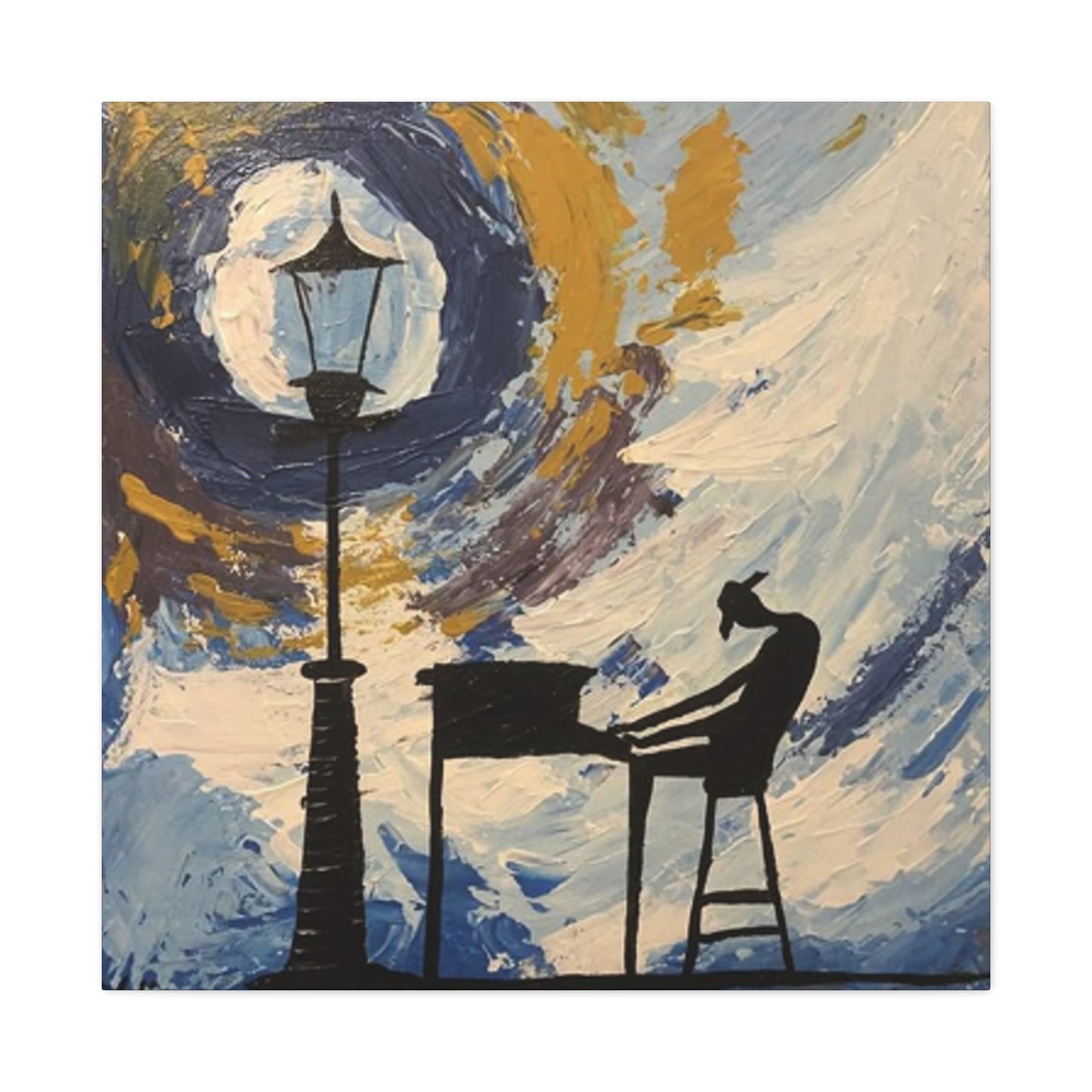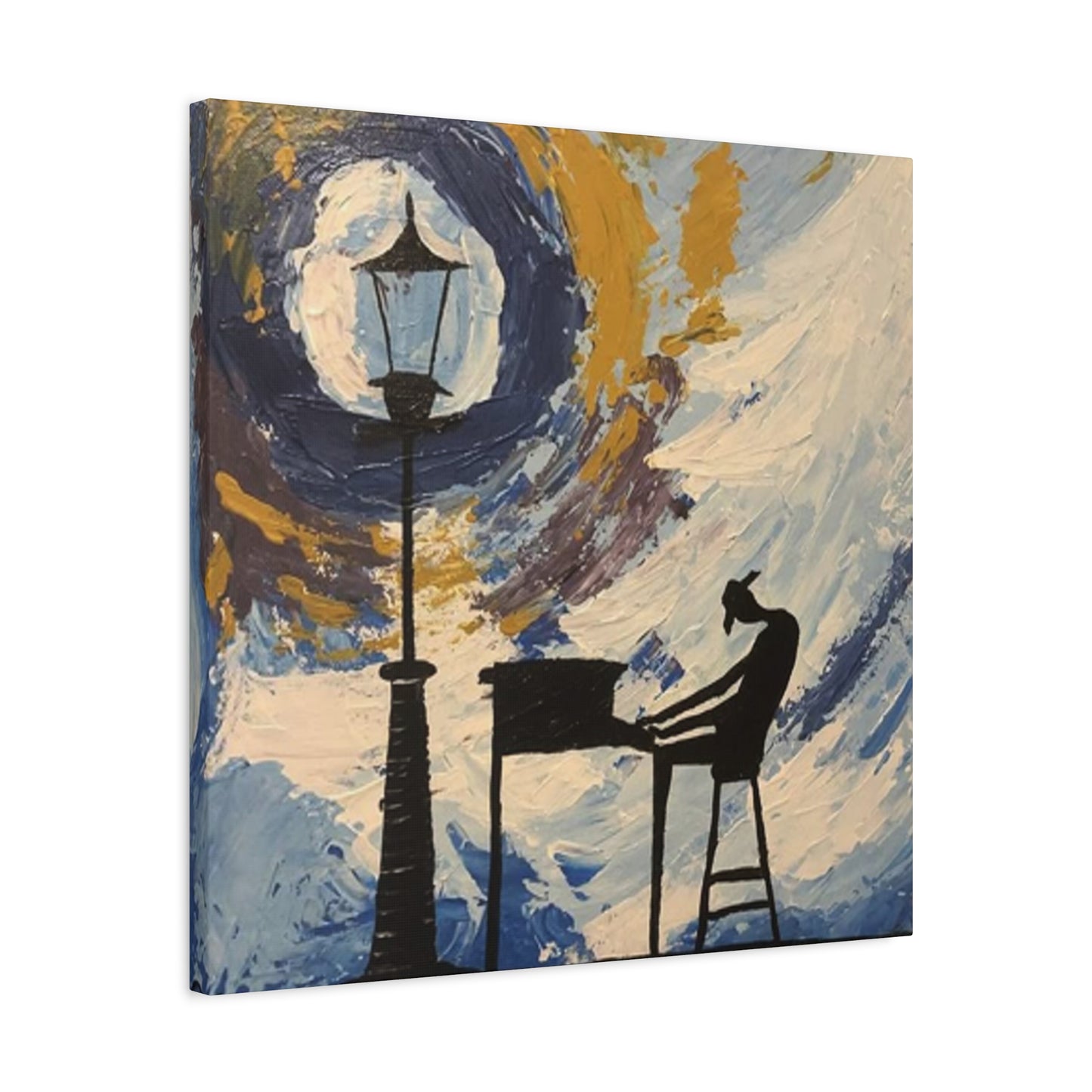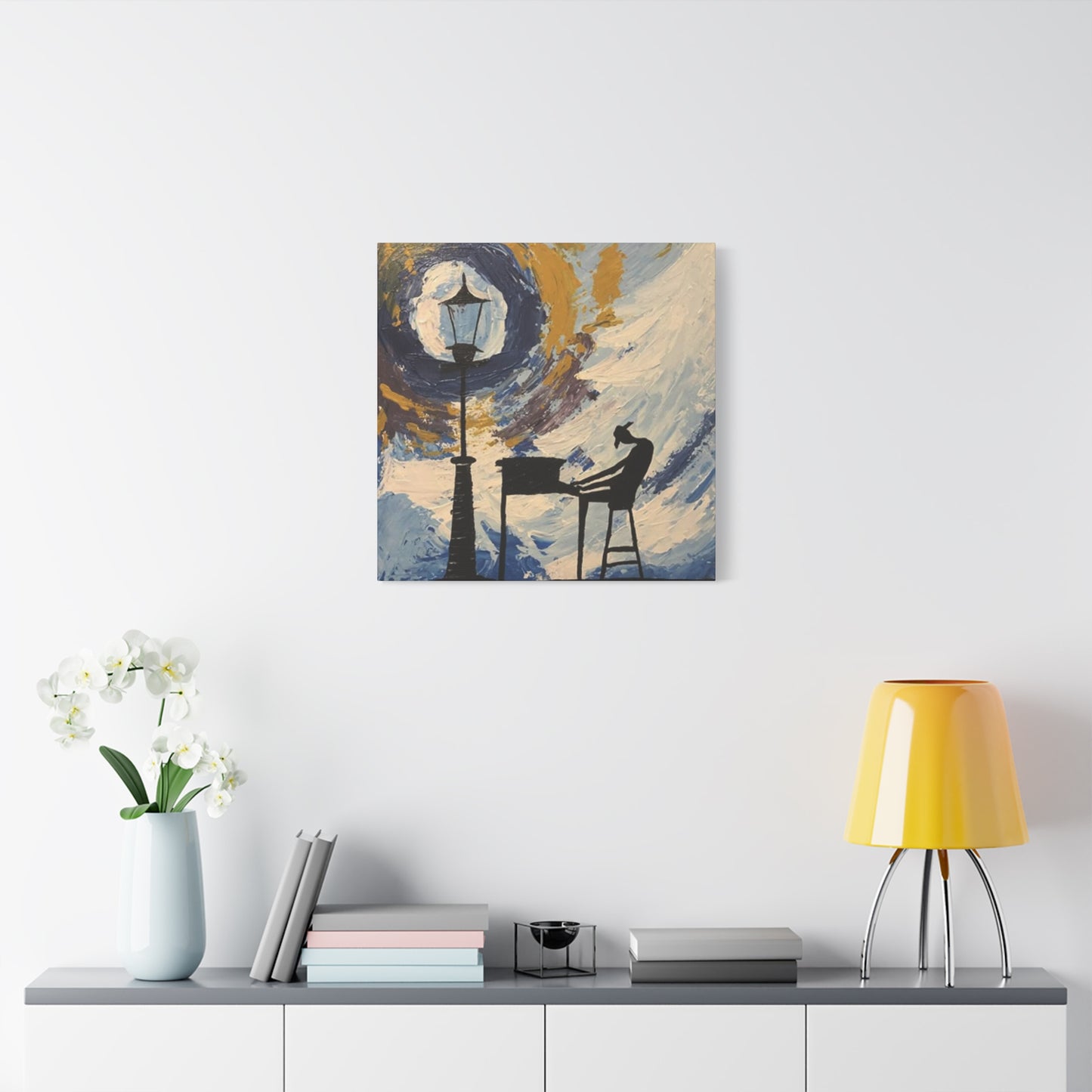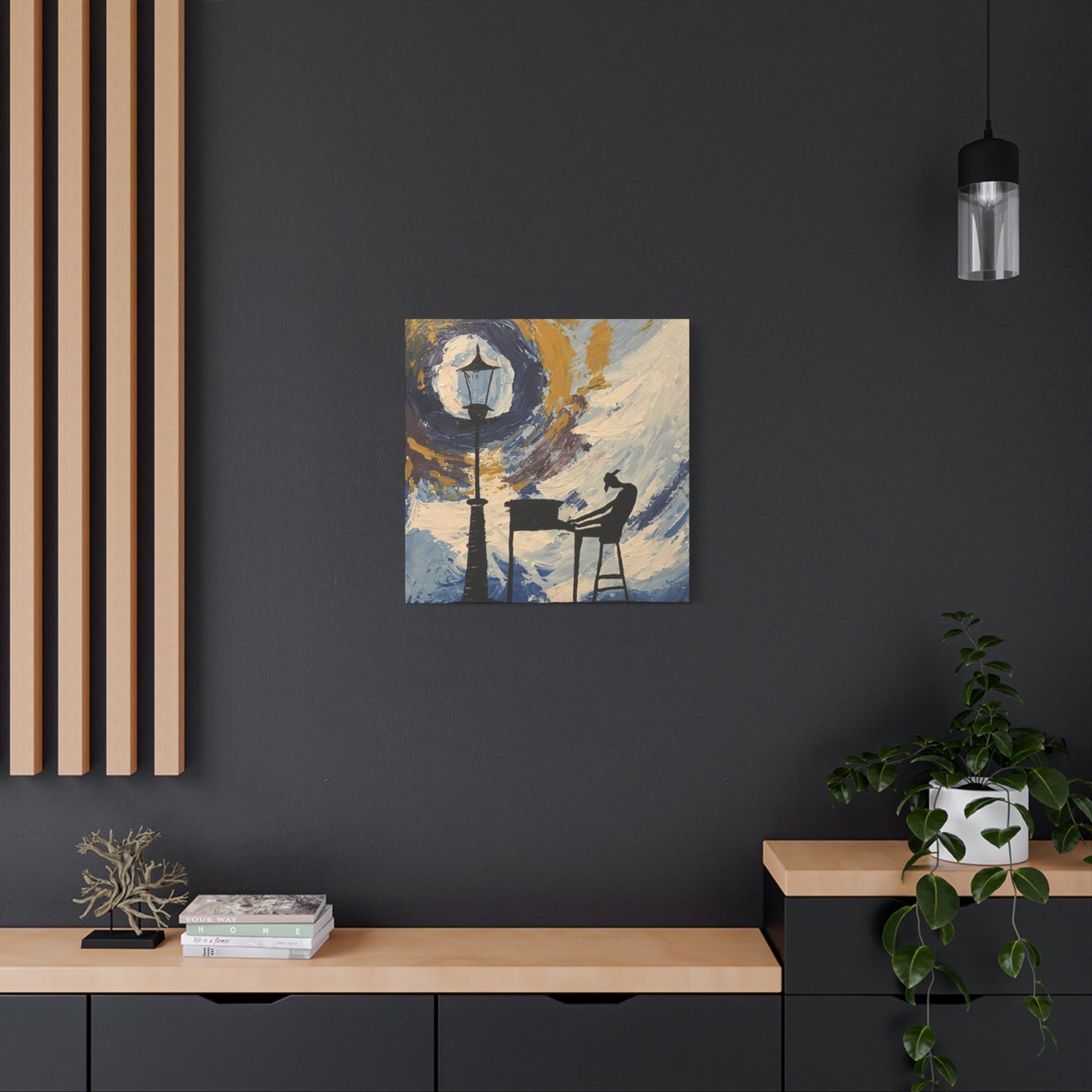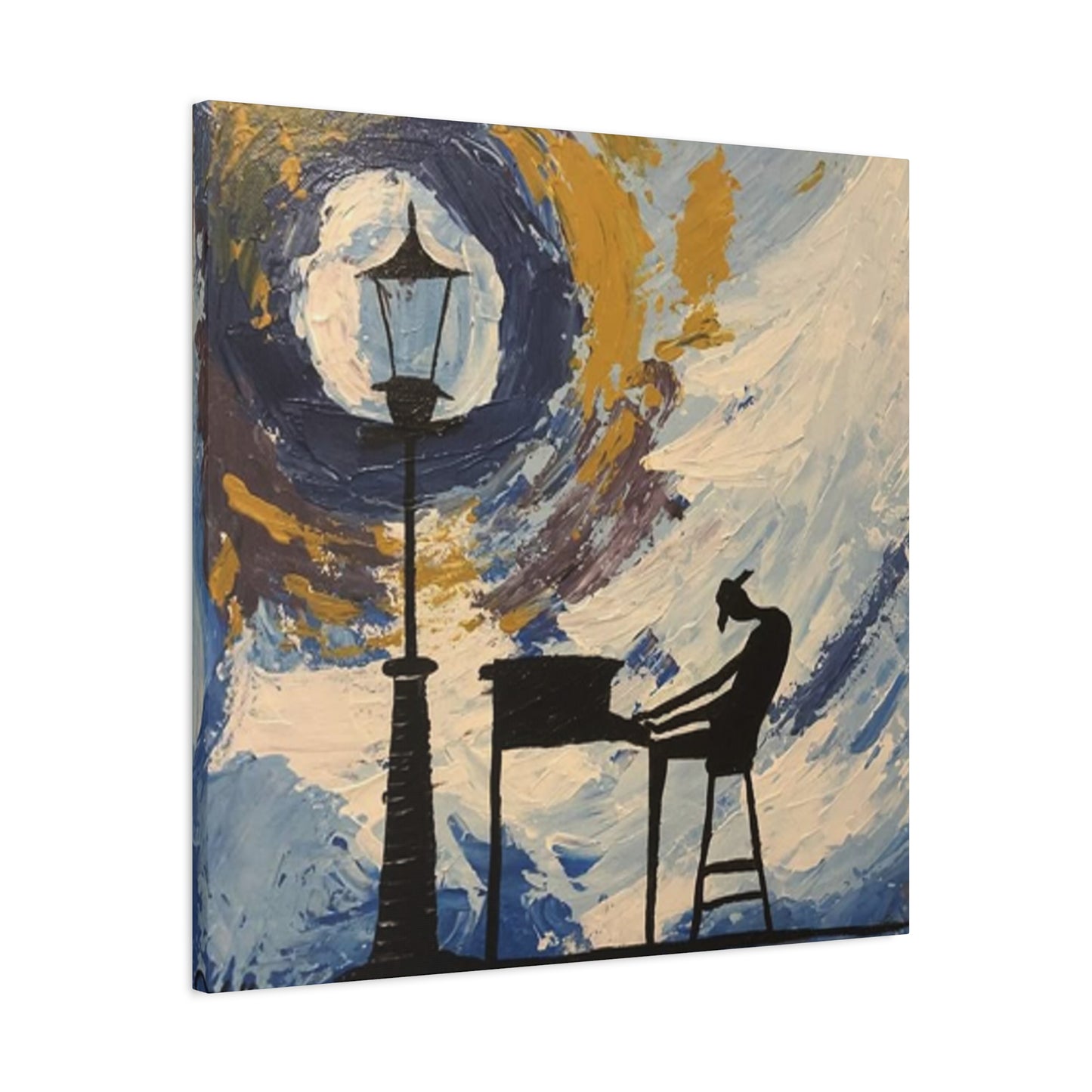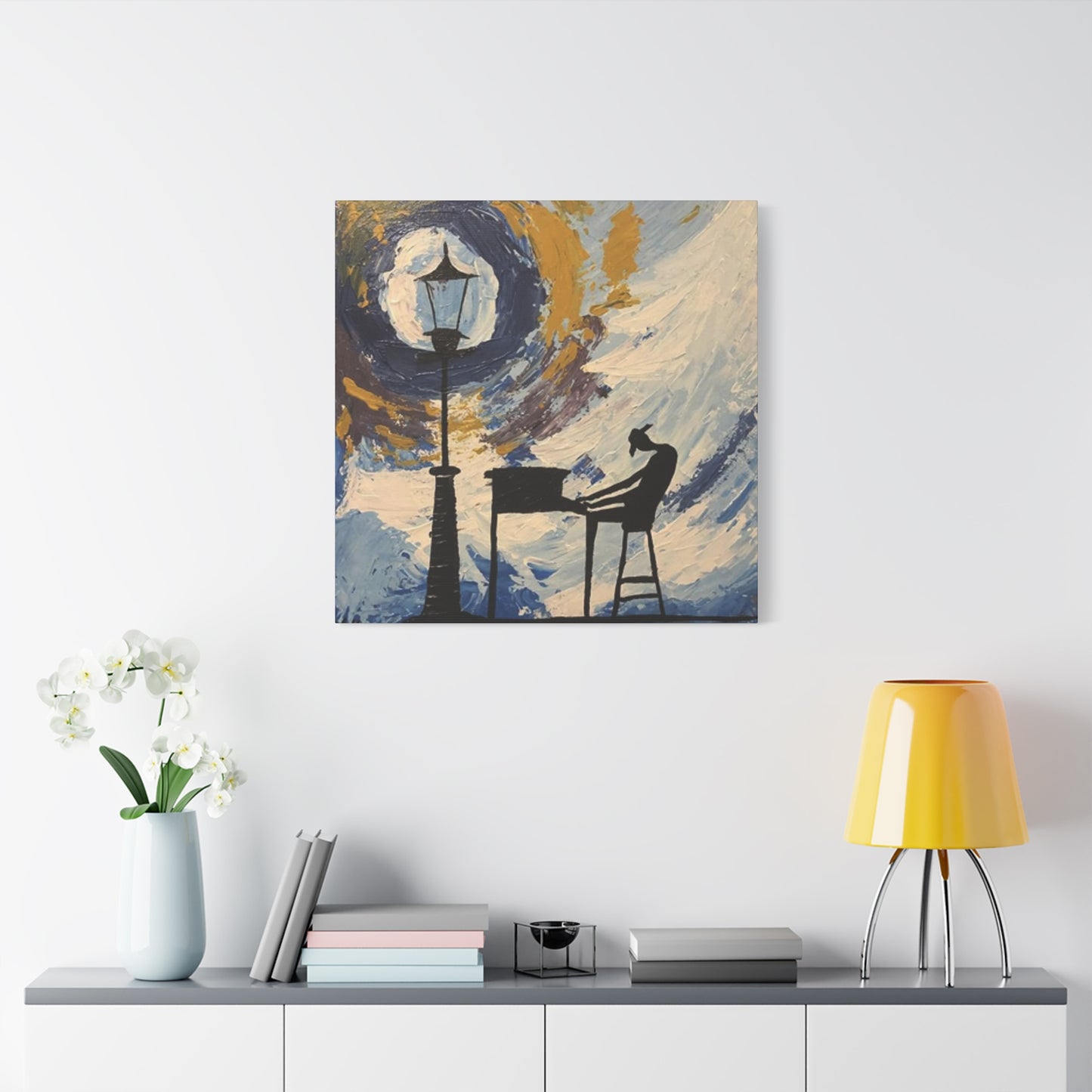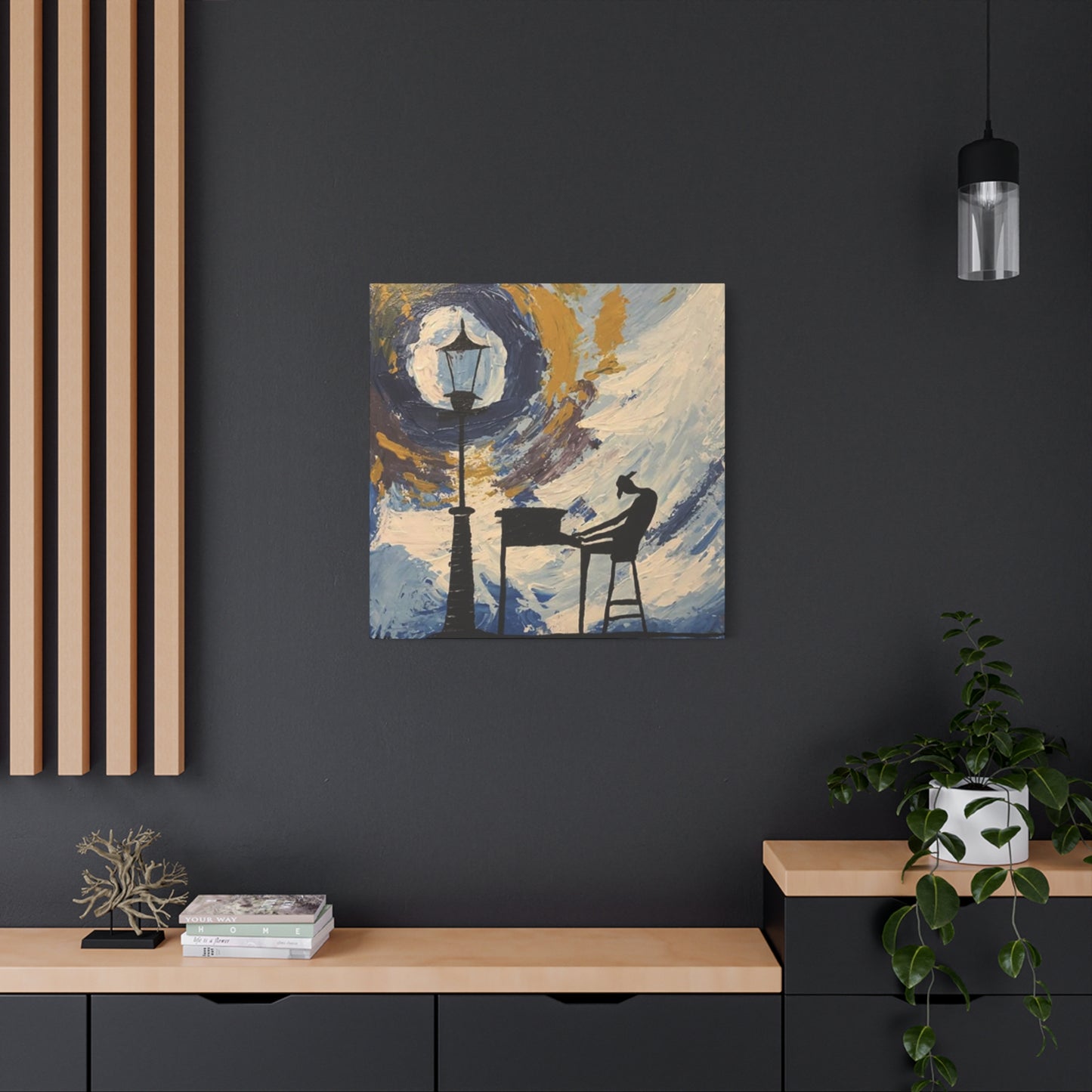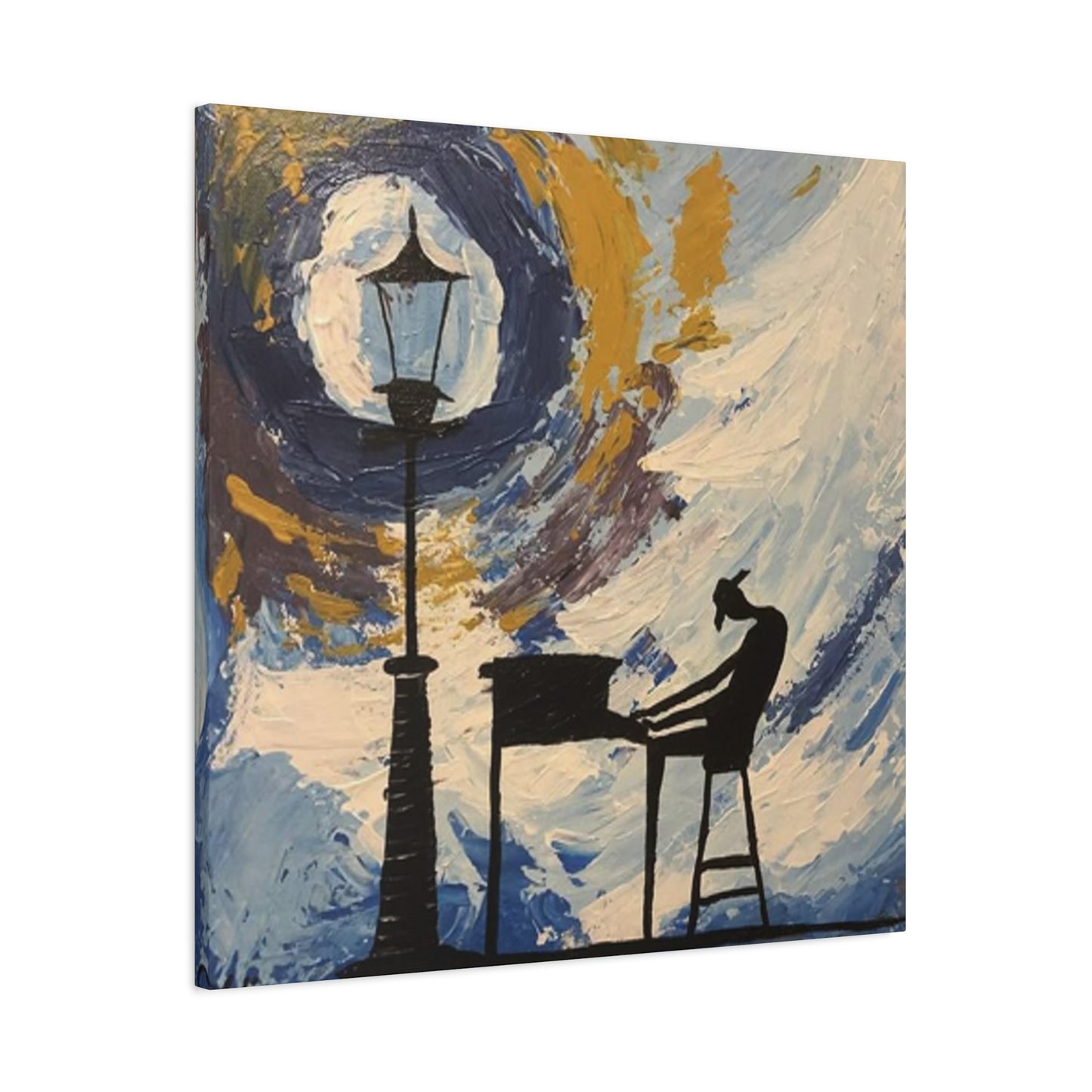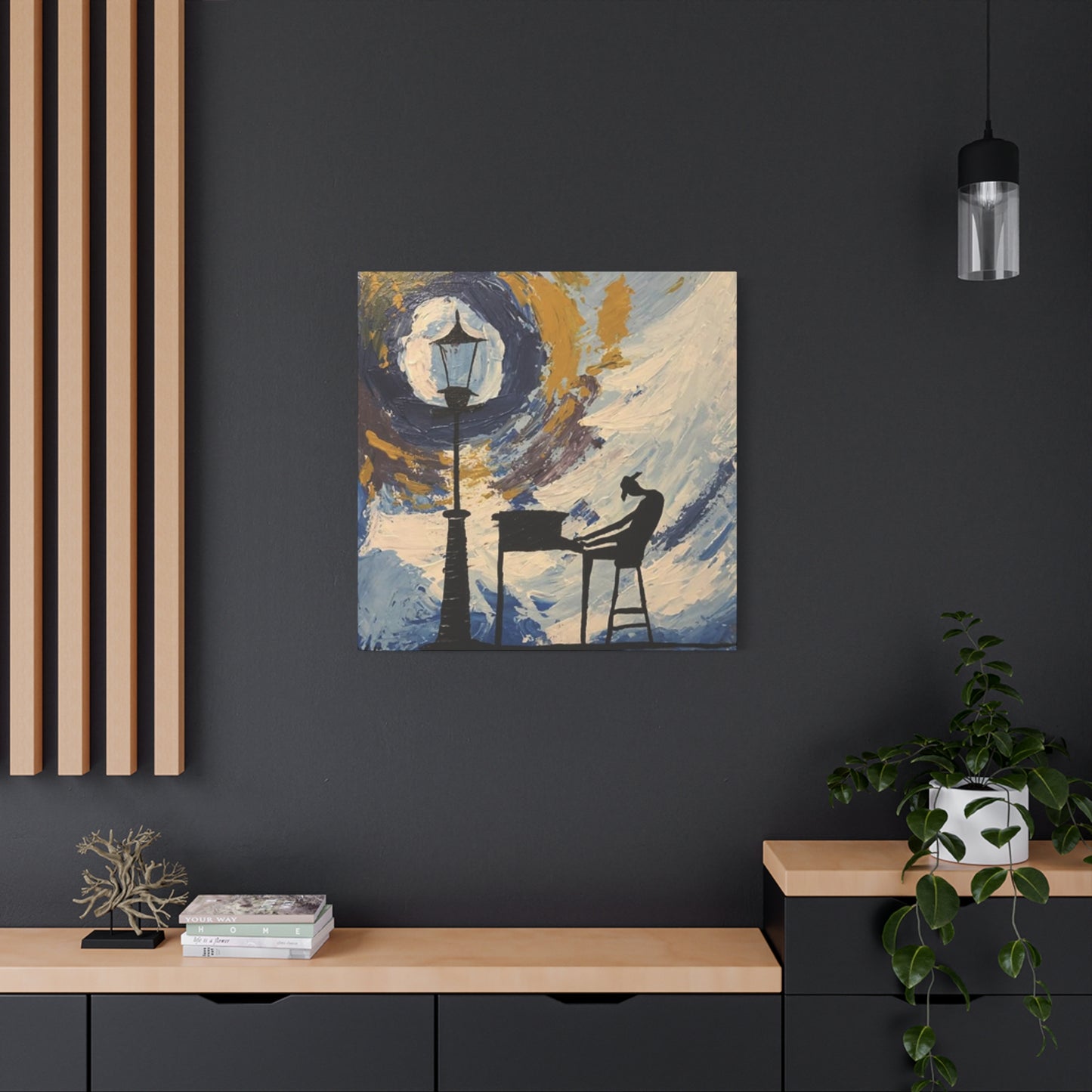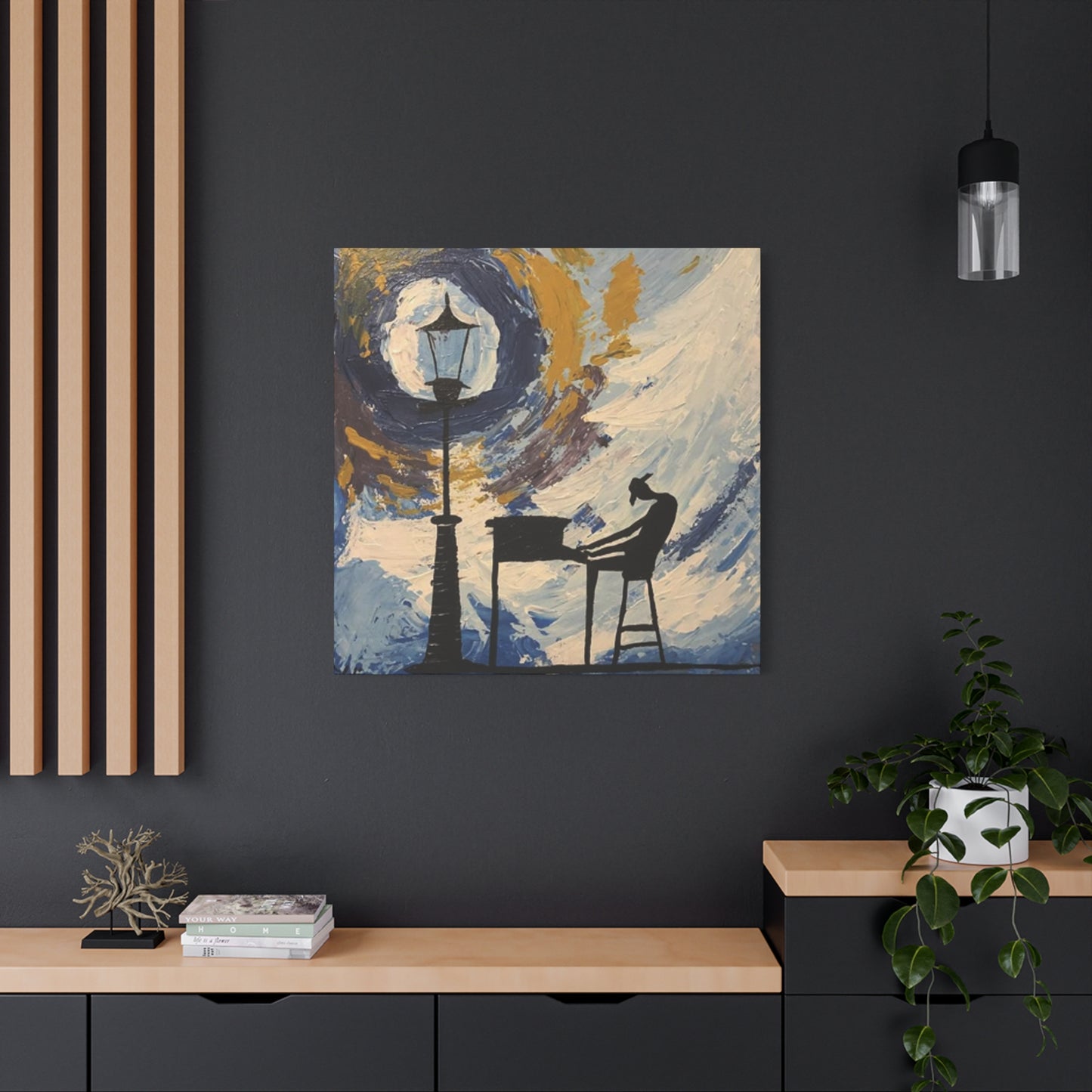Street Light and Piano Wall Art: A Symphony of Urban Elegance and Musical Expression
The fusion of urban imagery with musical elements creates a distinctive aesthetic that resonates deeply with contemporary art enthusiasts. When street lights illuminate the darkness of city landscapes and pianos represent the soul of musical expression, their combination on canvas produces something truly extraordinary. This artistic pairing speaks to the rhythm of modern life, where the glow of urban fixtures meets the timeless elegance of classical instruments. The juxtaposition creates a visual narrative that appeals to those who appreciate both the energy of cityscapes and the refined beauty of musical artistry.
Canvas prints featuring these dual themes have emerged as compelling choices for those seeking to infuse their environments with sophistication and character. The interplay between illuminated urban fixtures and the grandeur of keyboard instruments offers endless possibilities for creative expression. Artists who explore these themes often capture moments of solitude, reflection, and artistic inspiration, creating pieces that transcend mere decoration to become conversation starters and sources of daily inspiration.
The beauty of this artistic combination lies in its versatility. Whether rendered in realistic detail or abstract interpretation, the marriage of glowing city fixtures and elegant musical instruments provides a foundation for diverse artistic styles. From moody, atmospheric compositions that evoke the quiet hours of urban nights to vibrant, energetic pieces that celebrate the vivacity of city life alongside musical passion, these artworks offer something for every aesthetic preference.
The Contrast of Light and Music in Canvas Prints
The relationship between illumination and melody on canvas represents a fascinating study in complementary opposites. Urban lighting fixtures cast their glow through darkness, creating pools of warmth and visibility in otherwise shadowy environments. This luminous quality serves as a powerful visual metaphor when paired with musical instruments, which produce invisible waves of sound that fill silence with emotion and meaning. Together, these elements create a sensory experience that, while purely visual, suggests both sight and sound in harmonious balance.
Artists who work with these themes often emphasize the contrast between the mechanical nature of urban fixtures and the organic, expressive qualities of musical instruments. The rigid structures of city lighting poles stand in stark opposition to the flowing, curved lines of piano bodies and keys. This dichotomy creates visual tension that engages viewers, drawing the eye across the canvas as it moves between geometric urban elements and the more fluid forms associated with musical creation.
The interplay of brightness and shadow becomes particularly significant in these compositions. Illuminated fixtures naturally create dramatic lighting scenarios, with strong contrasts between lit and unlit areas. When combined with the glossy surfaces of polished instruments, these lighting effects multiply, creating reflections and highlights that add depth and dimension to the artwork. The way light bounces off lacquered surfaces and ivory keys introduces an additional layer of visual complexity that enriches the overall composition.
Color temperature plays a crucial role in establishing the mood of these pieces. The warm amber glow traditionally associated with urban lighting contrasts beautifully with the cool blacks and whites of keyboard instruments. This warm-cool balance creates visual harmony while maintaining the essential tension that makes these compositions so compelling. Artists may push this contrast further by introducing complementary colors in backgrounds or surrounding elements, amplifying the emotional impact of the work.
The symbolic weight of both elements adds conceptual depth to these visual combinations. Urban fixtures represent guidance, safety, and human presence in constructed environments, while musical instruments embody creativity, expression, and the human spirit's need for beauty. When unified on canvas, these symbols create a narrative about finding artistic inspiration within urban settings, about the persistence of culture and refinement amid the concrete and steel of modern cities.
Compositional balance becomes essential when working with such distinct elements. Artists must carefully consider how to weight the visual presence of both the illumination sources and the instruments to prevent one from overwhelming the other. Some compositions place the musical instrument as the central focus, with urban lighting serving as atmospheric context. Others reverse this hierarchy, using the instrument as a supporting element within a broader cityscape dominated by glowing fixtures. The most successful pieces often find equilibrium, allowing both elements to share visual importance.
The treatment of negative space in these compositions often proves as important as the rendered elements themselves. Empty areas of canvas can represent the silence between notes, the darkness between pools of light, or simply provide visual rest that prevents compositions from becoming cluttered. Strategic use of unpainted or minimally textured areas allows the eye to move fluidly through the composition, creating rhythm and pacing that mirrors musical timing.
Texture application further enhances the contrast between these elements. Smooth, reflective surfaces of instruments can be juxtaposed with rough, impasto techniques used for urban backgrounds, creating tactile variety that adds interest even in reproduction. The physical texture of paint application invites closer inspection, rewarding viewers who take time to examine the craftsmanship involved in creating these pieces.
The emotional resonance of these contrasting elements connects with viewers on multiple levels. Those with urban sensibilities appreciate the familiar glow of city lighting, while music lovers respond to the presence of beloved instruments. This dual appeal broadens the potential audience for such artwork, making it accessible to diverse groups with different interests and backgrounds. The universality of both urban experiences and musical appreciation ensures these themes remain relevant across cultures and generations.
Abstract Styles in Street Light and Piano Art
Abstract interpretations of urban illumination and musical instruments open extraordinary creative possibilities that transcend literal representation. When artists move beyond photorealistic depiction, they capture the essence and emotion of these subjects rather than their exact appearance. This approach allows for personal interpretation and emotional expression that can resonate more deeply with viewers than strictly representational work. The freedom of abstraction enables artists to distill complex scenes into their fundamental visual and emotional components.
Geometric abstraction offers one compelling approach to these themes. Sharp lines and angular shapes can suggest the structural elements of urban fixtures while maintaining enough ambiguity to encourage viewer interpretation. Similarly, the rectangular forms of keyboard keys lend themselves naturally to geometric treatment, transforming into patterns of light and dark rectangles that evoke the instrument without explicitly depicting it. This reductionist approach creates visual puzzles that engage viewers intellectually as they decode the suggested imagery.
Color field abstraction provides another avenue for exploring these subjects. Large areas of color can evoke the emotional atmosphere of illuminated urban nights or the resonant feelings produced by musical performance. By focusing on color relationships and gradual transitions rather than defined forms, artists create immersive experiences that wash over viewers like ambient sound. The absence of clear boundaries between elements mirrors the way light diffuses through atmosphere and sound waves permeate environments.
Expressionist approaches inject raw emotion into these themes, using gestural brushwork and intense color to convey feelings rather than appearances. The violent energy of city nights or the passionate intensity of musical performance can be suggested through aggressive mark-making and bold color choices. This style connects viewers to the emotional core of urban musical experiences, bypassing intellectual interpretation to speak directly to feelings and instincts.
Cubist-inspired fragmentation offers fascinating possibilities for depicting these subjects from multiple perspectives simultaneously. An instrument might be shown from various angles at once, its form broken apart and reassembled in ways that challenge conventional perception. Similarly, urban fixtures can be deconstructed and represented through overlapping planes and facets that suggest their three-dimensional reality while existing in purely two-dimensional form. This analytical approach invites sustained viewing as the eye works to integrate fragmented information into coherent understanding.
Lyrical abstraction brings a flowing, musical quality to visual art that seems particularly appropriate for these themes. Curving lines and organic shapes can suggest the invisible sound waves emanating from instruments or the soft glow radiating from urban fixtures. This style creates compositions that feel like visual music, with rhythms and harmonies expressed through line, form, and color rather than sound. The resulting works possess a kinetic energy that suggests movement even in static form.
Minimalist abstraction strips these themes to their absolute essentials, using the fewest possible elements to convey the concept. A single vertical line might represent an urban lighting pole, while a few horizontal strokes suggest piano keys. This radical simplification demands that every mark carry maximum meaning, creating pieces that reward contemplation and close attention. The restraint of minimalism can produce profound impact through its very economy of means.
Mixed abstraction styles often prove most effective, combining elements from various approaches to create unique visual languages. An artist might use geometric forms for structural elements while employing gestural strokes for atmospheric effects, or combine color field techniques with minimal line work to suggest both emotion and form. This eclectic approach allows maximum flexibility in responding to the specific demands of each composition.
The relationship between abstraction and interpretation becomes a key consideration in these works. While some abstract pieces remain relatively accessible, with recognizable elements providing anchors for understanding, others push toward complete non-objectivity, where connections to the stated themes become purely conceptual. The degree of abstraction chosen affects how viewers engage with the work and what they take away from the experience.
Symbolic color use becomes particularly important in abstract treatments of these themes. Without relying on realistic color, artists can assign hues based on emotional associations or personal symbolism. The golden glow of urban lighting might be intensified to brilliant yellow or transformed to cool blue, while instruments might be rendered in unexpected colors that reflect their sonic qualities rather than physical appearance. This freedom allows for highly personal artistic statements that distinguish individual artists' visions.
Caring for Street Light and Piano Canvas Prints
Proper maintenance ensures these artworks retain their visual impact and structural integrity for generations. Canvas prints, while durable, require specific care practices that differ from traditional framed works behind glass. Understanding the vulnerabilities of canvas and printed surfaces allows owners to implement protective measures that prevent deterioration while maintaining the artwork's accessibility and aesthetic appeal. The investment in quality pieces deserves corresponding commitment to their preservation.
Environmental conditions exert profound influence on canvas longevity. Excessive humidity encourages mold growth and can cause canvas to sag or warp, while extreme dryness leads to brittleness and cracking. Maintaining relative humidity between forty and fifty-five percent creates optimal conditions for canvas preservation. In climates with seasonal humidity fluctuations, using humidifiers or dehumidifiers helps stabilize conditions. Placing artworks away from sources of moisture like bathrooms or kitchens prevents localized humidity problems that could damage specific pieces.
Temperature stability proves equally crucial for canvas preservation. Fluctuating temperatures cause expansion and contraction of canvas fibers and stretcher frames, leading to loosening, warping, or cracking over time. Maintaining consistent temperatures between sixty-five and seventy-five degrees Fahrenheit provides ideal conditions. Avoiding placement near heating vents, air conditioning units, or exterior walls subject to temperature variations helps prevent thermal stress. In homes with significant temperature changes, choosing locations in climate-stable rooms protects artworks from environmental extremes.
Light exposure represents perhaps the most significant threat to canvas prints. Ultraviolet radiation causes fading, discoloration, and deterioration of both canvas fibers and printed inks. Direct sunlight proves particularly damaging, capable of noticeably affecting colors within months of exposure. Positioning artworks away from windows or using UV-filtering window films provides essential protection. Even indirect natural light contains UV radiation, so artworks receiving significant daylight exposure benefit from additional protective measures like UV-protective sprays or coatings applied to the canvas surface.
Artificial lighting also requires consideration, as many light sources emit UV radiation. Incandescent bulbs produce less UV than fluorescent tubes, while LED lighting offers the safest option for illuminating artworks. When using spotlights or picture lights, maintaining adequate distance between the light source and canvas prevents heat damage while minimizing UV exposure. Timer controls that limit lighting duration reduce cumulative light exposure, extending the life of colors and materials.
Dust accumulation, while seemingly minor, can cause significant problems over time. Particles settling on canvas surfaces attract moisture and can grind into the texture during cleaning attempts, causing abrasion. Regular dusting using soft, natural-fiber brushes prevents buildup. The dusting motion should be gentle and follow the direction of canvas weave rather than against it. For hard-to-reach areas or textured surfaces, compressed air provides an alternative, though it should be used at low pressure and from appropriate distances to avoid damage.
Cleaning beyond dusting requires careful consideration and appropriate techniques. Canvas prints should never be cleaned with water or conventional cleaning products, which can damage inks, coatings, and canvas fibers. For prints with protective coatings, slightly dampened microfiber cloths can be used sparingly, but only after testing on an inconspicuous area. Uncoated prints should receive only dry cleaning methods. Professional cleaning services offer the safest option for artworks requiring more than routine dusting, as they possess specialized knowledge and materials.
Physical contact should be minimized, as oils and acids from skin transfer to canvas surfaces and can cause discoloration or deterioration. When handling artworks, wearing clean cotton gloves prevents direct contact. Grasping the frame or stretcher bars rather than the canvas face provides secure handling without risking surface damage. During moving or storage, wrapping pieces in acid-free paper or cloth protects surfaces from scratches and contaminants while allowing canvas to breathe.
Display location affects preservation in multiple ways beyond environmental conditions. Hanging artworks at appropriate heights prevents them from becoming targets for accidental contact, pet interference, or damage from furniture and foot traffic. In homes with children or pets, positioning pieces higher on walls or in less-trafficked areas reduces risk. Ensuring secure mounting prevents falls that could damage both artwork and stretcher frames. Using appropriate hanging hardware rated for the weight of each piece prevents accidents resulting from inadequate support.
The backing of canvas prints requires attention as well. Dust and debris can accumulate behind artworks, and in some cases, insects may nest in protected spaces. Periodically checking the backs of canvases allows early detection of problems. Some collectors install dust covers on the backs of their canvases, creating barriers against contamination while still allowing air circulation. These covers should be made from acid-free materials and attached without putting stress on the canvas or frame.
Protective coatings applied to canvas surfaces provide additional defense against environmental factors. Various spray-on and brush-on products create barriers against UV radiation, moisture, and pollutants. However, these coatings alter the surface texture and appearance of prints, and once applied, they cannot be easily removed. Before applying protective products, researching their effects and testing them on similar materials ensures compatibility. Some prints come pre-treated with protective coatings, eliminating the need for additional application.
Storage practices become important for artworks not currently displayed. Canvas prints should be stored upright rather than flat, as stacking creates pressure that can cause impressions or sticking between surfaces. Climate-controlled storage areas with stable temperature and humidity prevent environmental damage during storage periods. Covering stored pieces with breathable materials protects them from dust without trapping moisture. Checking stored artworks periodically ensures problems are detected early, before they become severe.
Restoration of damaged canvas prints requires professional expertise in most cases. Attempting DIY repairs often worsens damage, particularly with printed canvases where matching inks and techniques proves extremely difficult. Professional conservators possess the skills, materials, and experience to address issues like tears, water damage, or fading. Early intervention prevents minor problems from developing into major damage, making prompt professional consultation worthwhile when issues arise.
Framing Ideas for Street Light and Piano Paintings
The presentation framework chosen for these artworks profoundly influences their visual impact and how they integrate with surrounding environments. While canvas prints often display beautifully without traditional frames, various framing approaches can enhance their appearance, provide additional protection, and help them complement existing furnishings and architectural features. The right framing choices elevate artworks from mere decoration to focal points that anchor and define their surroundings.
Gallery-style presentation, where canvases are mounted directly on walls without frames, emphasizes the contemporary nature of these pieces. This approach showcases the wrapped edges of canvases, which may feature continuation of the printed image or solid colors. The clean, minimalist aesthetic of unframed canvases suits modern environments and allows the artwork itself to command full attention without competing visual elements. For pieces with particularly striking imagery, this frameless presentation prevents anything from distracting from the central composition.
Floating frames create the illusion that artworks hover within their frames, with a gap between the canvas edge and frame molding. This contemporary presentation style adds dimension and visual interest while providing the protection and refinement of a traditional frame. The floating effect draws attention to the artwork's three-dimensional nature, emphasizing it as an object rather than simply a flat image. Various frame profiles work with this mounting style, from slim, understated moldings to more substantial profiles that make bold statements.
Traditional wooden frames offer warmth and classical elegance that can beautifully complement the themes in these artworks. Dark, rich woods like walnut or espresso create sophisticated presentations that echo the polished surfaces of pianos, creating visual harmony between frame and subject matter. Lighter woods like oak or maple provide contrast that can make dark, moody compositions pop against their surroundings. Wood grain adds organic texture that softens the industrial elements of urban imagery, creating balanced presentations.
Metal frames contribute modern, industrial aesthetics that align perfectly with urban themes. Brushed aluminum, matte black steel, or brass frames echo the materials of city environments, reinforcing the connection between artwork and subject. Metal frames tend toward simpler profiles, allowing the artwork to dominate while providing crisp, clean boundaries. The durability of metal makes these frames practical choices for high-traffic areas where bumps and impacts might damage more delicate frame materials.
Ornate, decorative frames might seem contradictory to contemporary canvas prints, but when used thoughtfully, they create intriguing juxtapositions. An elaborately carved gilt frame surrounding an urban night scene creates tension between classical elegance and modern subject matter, making both frame and image more interesting through their contrast. This approach works particularly well when the artwork itself contains traditional elements like musical instruments, creating a bridge between classical and contemporary aesthetics.
Shadow box frames create deep profiles that emphasize the three-dimensional nature of canvas art. The increased depth between the artwork and surrounding wall creates dramatic shadowing that changes with lighting conditions, adding dynamic visual interest. This presentation style works exceptionally well for textured or mixed-media pieces where physical dimension plays an important role in the overall effect. The substantial presence of shadow box framing suits larger pieces that need visual weight to anchor their surroundings.
Color coordination between frames and artwork requires thoughtful consideration. Frames can either complement dominant colors in the artwork, creating harmonious presentations, or provide contrasting colors that make both frame and image more vibrant through opposition. Neutral frames in black, white, or natural wood tones offer safe choices that work with most color schemes, while colored frames make bolder statements that require careful coordination with both artwork and surrounding environment.
Frame width affects the visual weight of presentations significantly. Narrow frames provide minimal interference with artwork, suitable for pieces with strong compositions that need no reinforcement. Medium-width frames offer balanced presentations that neither overwhelm artwork nor disappear from notice. Wide frames create substantial presence, appropriate for larger pieces or situations where the framed artwork needs to hold its own against bold architectural features or large furnishings.
Corner treatments and joinery quality separate premium frames from budget options. Mitered corners should meet precisely, with no gaps or misalignment. Secure joinery ensures frames remain square and tight, preventing warping or separation. Quality frames use appropriate techniques for their materials, whether traditional wood joinery for wooden frames or welded corners for metal ones. Examining corner construction provides insight into overall frame quality and likely longevity.
Multi-piece presentations benefit from coordinated framing that unifies separate canvases into cohesive groupings. Using identical frames for all pieces in a series creates visual continuity, while varying frame colors or styles within a consistent profile adds interest while maintaining overall harmony. The spacing between framed pieces in groupings should be consistent, creating intentional relationships between the artworks rather than arbitrary placement. Grid arrangements work well for similarly sized pieces, while asymmetrical arrangements suit varied sizes.
Custom framing allows precise matching of frames to specific artworks and environments. Professional framers offer extensive material and finish options, expert advice on what works best for particular pieces, and precise construction that ensures optimal fit and presentation. While more expensive than ready-made frames, custom options provide solutions for unusual sizes, specific aesthetic requirements, or situations where standard offerings simply do not satisfy. The investment in custom framing often proves worthwhile for particularly significant or valuable artworks.
Frame maintenance ensures presentations remain attractive over time. Wooden frames benefit from occasional cleaning with appropriate wood care products that remove dust and restore finish. Metal frames typically require only wiping with damp cloths to remove fingerprints and grime. Glass or acrylic glazing, if used, needs regular cleaning with appropriate products that won't scratch or leave residue. Checking hardware periodically ensures secure mounting, and replacing worn bumpers or hangers prevents damage to both frame and wall.
Small vs Large Street Light and Piano Wall Art
Scale considerations dramatically affect how artworks function within their environments and the impact they create on viewers. The choice between smaller, more intimate pieces and large, commanding works depends on multiple factors including available locations, existing furnishings, desired emotional impact, and practical considerations like budget and installation requirements. Understanding how size influences perception and function helps in selecting appropriately scaled pieces for specific situations.
Small artworks, typically ranging from eight by ten inches to sixteen by twenty inches, offer intimacy and versatility that larger pieces cannot match. These compact works suit tight locations like narrow hallways, small wall sections between windows, or areas where large artworks would overwhelm. The modest scale encourages close viewing, rewarding those who approach and examine details that might be overlooked from a distance. This intimate viewing experience creates personal connections between artwork and viewer, as discovering fine details feels like uncovering secrets meant for attentive observers.
The flexibility of smaller pieces allows for creative arrangement strategies. Multiple small canvases can be grouped to create gallery walls that tell visual stories or explore themes through variation. These collections offer visual interest through their arrangements while allowing individual pieces to maintain distinct identities. The ability to rearrange groupings provides ongoing opportunities to refresh presentations without acquiring new artwork. As tastes and environments evolve, existing small pieces can be reconfigured into new arrangements that feel entirely fresh.
Budget considerations often make smaller artworks more accessible to collectors building their collections or decorating multiple areas. The lower cost of compact pieces allows for acquiring multiple works rather than investing in a single large piece. This approach enables exploring various artists, styles, or themes without substantial financial commitment. For those unsure about particular styles or subjects, smaller pieces offer opportunities to experiment with lower risk than larger investments entail.
Medium-sized artworks, roughly eighteen by twenty-four inches to thirty by forty inches, represent versatile middle ground that works in many situations. These pieces command attention without dominating their surroundings, creating focal points that anchor rooms without overwhelming other elements. The scale suits common furniture arrangements, working well above sofas, beds, or console tables without requiring furniture to be positioned specifically to accommodate them. This versatility makes medium pieces popular choices for living rooms, bedrooms, and dining areas.
The viewing distance for medium pieces allows appreciation of both overall composition and moderate detail from typical seating positions. Viewers need not approach closely to grasp the artwork's essential qualities, yet closer inspection reveals nuances not visible from across rooms. This dual-scale appreciation makes medium pieces satisfying from various distances, functioning successfully whether viewed casually from afar or examined deliberately from nearby positions.
Large artworks, typically forty by sixty inches and beyond, make powerful statements that transform environments. These substantial pieces dominate their surroundings, establishing themselves as primary focal points around which other elements orbit. The commanding presence of large-scale works suits spacious rooms with high ceilings and ample wall surfaces where smaller pieces would appear lost or insignificant. In appropriately sized environments, large artworks create drama and impact impossible to achieve with smaller works.
The immersive quality of large-scale works distinguishes them from smaller counterparts. Viewers standing before substantial pieces find their visual fields filled with imagery, creating experiences more enveloping than observational. This immersion fosters emotional engagement and memorable impressions that smaller works rarely achieve. The power of scale itself becomes part of the artistic impact, as the physical presence of large canvases contributes to their overall effect beyond their imagery alone.
Installation considerations become more complex with larger pieces. Substantial artworks require secure mounting to support their weight, often needing specialized hardware and installation techniques. Finding appropriate locations with sufficient clear wall area challenges owners of homes with many windows, doorways, or architectural interruptions. Moving large canvases through doorways, up stairs, or around corners demands careful planning and sometimes temporary removal of doors or furniture. These logistical factors require consideration when selecting large-scale works.
Architectural scale matching ensures artworks feel appropriate within their environments. In rooms with tall ceilings and expansive walls, large artworks prevent walls from appearing empty or underutilized. Conversely, in smaller rooms with standard ceiling heights, oversized pieces can make surroundings feel cramped and unbalanced. Assessing the scale of architectural features, furniture, and other elements helps determine what size artwork will harmonize with rather than fight against existing conditions.
Viewing distance relationships vary with artwork size and affect optimal placement. Smaller pieces benefit from positioning along pathways or in areas where people naturally come close, ensuring their details receive appropriate attention. Medium pieces work well in conversational areas where viewing from typical seating distances suits their scale. Large works need sufficient viewing distance for their full compositions to be appreciated, requiring placement where viewers can step back far enough to take in entire compositions comfortably.
Impact density differs between single large works and collections of smaller pieces covering equivalent total areas. A single large canvas creates unified, cohesive impact, presenting one artistic vision commanding attention. Multiple small pieces occupying the same total area create diverse, varied interest with multiple focal points and visual rhythms. The choice between these approaches depends on desired effects, with unified impact suiting some situations while varied interest serves others better.
Subject matter and artistic style influence optimal sizing. Highly detailed works benefit from larger scales that allow details to be appreciated without viewers pressing their noses to the canvas. Conversely, some minimalist or abstract works maintain their impact at smaller scales, with enlargement adding nothing meaningful. The atmospheric, moody qualities often found in urban night scenes featuring illuminated fixtures work beautifully at large scales that envelop viewers in their ambiance.
Proportional relationships with furniture require attention when selecting artwork sizes. Pieces positioned above sofas, beds, or tables should relate proportionally to the furniture beneath them. General guidelines suggest artwork width should span fifty to seventy-five percent of the furniture width below it, though these rules flex based on specific situations. Artworks significantly smaller than underlying furniture appear undersized and weak, while pieces extending substantially beyond furniture edges lack visual anchoring.
The Storytelling Power of Street Light and Piano Art
Visual narratives embedded within these artworks create emotional connections that transcend mere aesthetic appreciation. The combination of urban illumination and musical instruments naturally suggests stories about artistic life, creative inspiration, nighttime cities, and the intersection of human creativity with constructed environments. These narrative elements invite viewers to construct their own stories and interpretations, making each viewing experience personal and potentially different each time the artwork is encountered.
Solitude and contemplation emerge as common themes in these compositions. A single illuminated fixture casting light on an abandoned instrument suggests waiting, pausing, or reflecting. The absence of human figures allows viewers to project themselves into scenes, imagining themselves as the unseen musician or the solitary wanderer encountering this moment. This quality of emptiness filled with potential resonates with those who find meaning in quiet moments and solitary experiences.
The passage of time finds expression through the timeless quality of these subjects. Musical instruments represent artistic traditions extending back centuries, while urban lighting speaks to modern life and technological progress. Their combination creates temporal tension between past and present, tradition and modernity. This temporal dialogue invites consideration of how artistic expression persists across generations and adapts to changing contexts while maintaining essential qualities.
Urban romance permeates many of these compositions, evoking the particular quality of cities at night when crowds disperse and quieter, more intimate character emerges. The warm glow of lighting fixtures transforms harsh daylight environments into softer, more forgiving nighttime spaces. The presence of musical instruments suggests the cultural richness that makes urban centers attractive to creative individuals seeking artistic community and inspiration. Together, these elements paint cities as places where artistic dreams flourish.
Journey narratives emerge through compositional choices that suggest movement or transition. Instruments positioned along illuminated pathways imply traveling musicians, while lighting fixtures extending into darkness suggest unknown destinations. These journey themes resonate with viewers navigating their own life paths, making career decisions, or seeking their places in the world. The metaphorical richness of journeys makes these implied narratives universally accessible.
Memory and nostalgia color many interpretations of these artworks. Musical instruments carry strong associations with learning, practice, performance, and the emotions connected to musical experiences. Urban lighting recalls specific places and times, triggering memories of particular cities, neighborhoods, or moments. The combination activates personal associations unique to each viewer, making the artwork a catalyst for remembering and reflecting on individual experiences.
Creative inspiration and artistic calling find symbolic expression through these elements. The pairing suggests that inspiration strikes anywhere, that artistic expression flourishes even in mundane urban settings, and that creativity illuminates darkness both literal and metaphorical. For artists and musicians viewing these works, they serve as affirmations of vocational choices and reminders that their work brings light and beauty to the world.
Contrast between public and private realms appears in compositions that show instruments in urban settings. Musical practice and performance, though often public activities, require private preparation, reflection, and emotional vulnerability. The juxtaposition of exposed urban environments with instruments creates tension between public exposure and private expression, between performance and practice, between artist and audience.
Metaphorical illumination operates on multiple levels within these artworks. Light fixtures literally illuminate physical surroundings, but they also symbolize intellectual illumination, inspiration, revelation, and understanding. Musical instruments, while not light sources themselves, illuminate lives through beauty, emotion, and meaning. This layered symbolism rewards contemplative viewing and invites multiple interpretations that deepen appreciation.
Cultural commentary emerges in works that question or celebrate the role of art in urban environments. Do cities support or suppress creativity? Can artistic sensitivity survive amid concrete and steel? These questions underlie many compositions that position delicate instruments within hard urban contexts. The answers suggested through compositional choices and artistic treatment reflect artists' perspectives on contemporary urban life and culture's place within it.
Personal significance develops as viewers bring their own experiences and emotions to artworks. A pianist sees different meanings than a non-musician when viewing keyboard instruments. Someone raised in rural areas interprets urban imagery differently than a lifelong city dweller. This variability in interpretation makes these artworks perpetually fresh, as changing life experiences alter how we understand and relate to familiar images.
Emotional landscapes find expression through the moods evoked by lighting, color, and composition. Melancholy, joy, longing, peace, excitement, and countless other emotional states can be suggested through artistic choices. These emotional qualities transcend specific narratives, communicating feelings directly without requiring story construction. The emotional impact provides immediate, visceral engagement before intellectual interpretation begins.
Combining Urban and Musical Themes in Wall Art
The integration of city scenes with instrumental imagery creates rich, multifaceted compositions that draw from two powerful visual traditions. Successfully merging these themes requires thoughtful consideration of balance, symbolism, and aesthetic coherence. Artists approaching this fusion must decide how to weight the various elements, which details to emphasize, and how to create unified compositions from potentially disparate parts. The resulting works span a spectrum from literal representation to symbolic suggestion.
Contextual integration places instruments within believable urban environments, creating scenes that feel natural and uncontrived. A keyboard instrument positioned on a rain-slicked city street beneath a glowing fixture tells a coherent story of performance, perhaps busking or an outdoor concert. The urban environment provides setting and atmosphere while the instrument supplies focal interest and thematic content. This approach prioritizes narrative coherence and realistic presentation.
Juxtaposition strategies deliberately contrast urban and musical elements to create visual and conceptual tension. An instrument might float against an urban backdrop, defying physical logic to make symbolic points about the transcendent nature of music or the otherworldly quality of artistic inspiration. The impossibility of the composition shifts interpretation from literal to metaphorical, inviting viewers to seek meaning beyond surface appearance.
Symbolic representation abstracts both urban and musical elements into signs and suggestions rather than detailed depictions. A vertical glowing form suggests a lighting fixture without precisely rendering its structure, while a pattern of alternating rectangles evokes keyboard keys. This reductive approach creates spare, minimalist compositions that communicate through essence rather than detail. The interpretive space left by abstraction allows diverse readings and personal meaning-making.
Atmospheric blending uses urban environments to establish mood that frames and enhances musical elements. Foggy streets, rain-glossed pavement, and diffused light create ambiance that makes instruments appear to emerge from or dissolve into their surroundings. This technique creates mystery and poetry, transforming potentially mundane subjects into evocative, emotionally charged images. The boundaries between elements blur, creating unified wholes rather than assemblages of parts.
Scale manipulation creates striking effects by showing instruments at unexpected sizes relative to urban elements. A piano rendered at architectural scale, towering over street fixtures, inverts expected relationships and makes bold statements about the importance of music and art. Conversely, showing a tiny instrument dwarfed by massive urban structures comments on the precarious position of art in contemporary society. These scale games command attention and provoke thought.
Textural contrast between different elements adds visual interest and tactile quality. Rough, heavily textured urban backgrounds created with palette knives or thick paint application contrast with smoothly rendered instruments painted with fine brushes. This textural variety creates depth and dimension while emphasizing the different qualities of the subjects. The physical surface of the canvas becomes an active part of the composition rather than a passive support.
Color relationships unify disparate elements or create intentional discord depending on artistic intent. Harmonious color schemes that extend across both urban and musical elements create cohesive presentations where all parts feel related and mutually supportive. Contrasting color treatments make elements compete for attention, creating dynamic tension that energizes compositions. Strategic color use guides viewer attention and establishes visual hierarchies.
Lighting consistency or inconsistency serves compositional purposes. Maintaining consistent light sources and their effects across all elements creates believable, coherent scenes. Deliberately using impossible lighting, where different elements are illuminated from incompatible angles, signals symbolic or surreal intent. Lighting treatment fundamentally affects whether compositions read as observations of actual scenes or as constructed symbolic statements.
Perspective alignment determines whether compositions feel unified or assembled. Using consistent perspective across all elements creates spatial coherence, while mixing perspectives from different viewpoints creates Cubist-influenced fractured realities. The choice affects how viewers process the image and what kind of experience the artwork provides. Traditional unified perspective feels more accessible, while mixed perspectives challenge and engage viewers differently.
Symbolic layering creates rich compositions that reward extended viewing and contemplation. Surface elements provide initial visual interest, while deeper layers of symbolism reveal themselves to patient observers. The interaction between urban and musical themes generates meaning beyond what either element could convey alone. This multiplicative effect characterizes the most successful examples of this artistic fusion.
Historical resonance connects these contemporary artistic choices to rich traditions. The pairing of urban scenes with cultural artifacts has precedents in centuries of artistic production, from Dutch genre paintings showing musical instruments to Impressionist depictions of Parisian nightlife. Acknowledging these connections places current work within artistic continuums while demonstrating how artists adapt traditional subjects to contemporary sensibilities.
Street Light and Piano Art for Modern Decor
Contemporary living environments benefit tremendously from the sophisticated aesthetic these artworks provide. The combination of urban edge and musical refinement suits modern sensibilities that value both authenticity and culture. These pieces function beautifully within minimalist schemes, adding visual interest without cluttering clean lines, while also enriching maximalist environments with additional layers of meaning and beauty. Their versatility makes them valuable additions to diverse decorating approaches.
Minimalist environments find perfect complements in these artworks, particularly those rendered with restraint and economy of means. Simple compositions featuring clean lines, limited color palettes, and ample negative space align with minimalist principles while preventing austerity. A single glowing fixture rendered against empty darkness provides focal interest without compromising the spare aesthetic. The artwork satisfies the minimalist desire for quality over quantity, offering visual richness through sophisticated simplicity rather than elaborate complexity.
Industrial-style settings naturally accommodate urban-themed artwork, creating thematic consistency between architecture and art. Exposed brick, concrete floors, metal fixtures, and open ductwork find artistic echoes in compositions featuring city elements. The rawness of industrial aesthetics pairs beautifully with gritty urban imagery, while the inclusion of refined musical instruments prevents environments from feeling too harsh or unwelcoming. This balance between rough and refined characterizes successful industrial decorating.
Contemporary traditional environments blend classic and modern elements, and these artworks bridge that divide perfectly. Traditional architectural details, crown molding, and classic furniture pieces accept these modern subjects because musical instruments themselves carry historical weight and cultural prestige. The urban elements provide contemporary balance, preventing rooms from feeling dated or overly formal. This hybrid approach satisfies those who appreciate both heritage and innovation.
Conclusion
Street light and piano wall art beautifully blend the worlds of urban elegance and musical expression, creating a visual symphony that resonates deeply with viewers. This unique artistic fusion captures the raw energy of cityscapes while echoing the emotional depth and creativity found in music. Together, street light imagery and piano motifs form a captivating dialogue between light and sound, structure and rhythm, transforming any space into an immersive experience of cultural sophistication.
The urban environment is often portrayed as a place of constant motion and vibrant life, and street lights symbolize the pulse of the city after dark—guiding paths, casting shadows, and illuminating stories. When paired with piano imagery, which evokes harmony, emotion, and timeless artistry, the resulting wall art becomes a celebration of both human ingenuity and artistic spirit. This combination appeals to art lovers who appreciate not only aesthetic beauty but also deeper symbolic meanings.
One of the compelling aspects of street light and piano wall art is its versatility. The imagery can be rendered in various artistic styles—from realistic cityscapes glowing under lamplight to abstract compositions where piano keys merge with urban structures. This adaptability allows the art to fit seamlessly into diverse interior designs, whether modern, industrial, minimalist, or eclectic. The contrast between the hard lines of street lights and the fluid curves of piano elements creates a balanced composition that energizes and soothes simultaneously.
Moreover, this art form resonates with people on multiple emotional levels. Street lights evoke nostalgia and a sense of mystery associated with nighttime city strolls, while pianos symbolize creativity, emotion, and expression. Together, they tell stories of late-night inspiration, quiet contemplation, and the harmonious rhythm of city life. This narrative quality invites viewers to engage personally with the artwork, making it more than a decorative piece—it becomes a meaningful connection to urban culture and musical heritage.
From an artistic perspective, the interplay of light and shadow in these compositions is particularly striking. Artists skillfully use illumination to highlight piano keys or cast dramatic silhouettes of street lamps, enhancing depth and atmosphere. This mastery of contrast and composition draws the viewer’s eye and creates a dynamic visual rhythm, much like a well-composed musical piece. The effect is a multisensory experience where visual art mirrors the cadence and flow of music.
For interior designers, incorporating street light and piano wall art adds sophistication and character to living rooms, studios, music rooms, cafes, and performance spaces. These artworks become focal points that spark conversation and inspire creativity. Whether chosen as a large statement piece or a subtle accent, the art brings a refined urban vibe that celebrates both the built environment and the power of music to elevate human experience.
Additionally, this genre of wall art can serve as a tribute to artists, musicians, and city dwellers whose lives intertwine with the night’s rhythm and melody. It honors the creative spirit that thrives in urban spaces—where culture, light, and sound converge. In this way, street light and piano wall art transcends visual appeal to become an emblem of artistic passion and urban identity.
In conclusion, street light and piano wall art embodies a unique synthesis of urban elegance and musical expression, creating artworks that resonate with both the eye and the soul. This fusion offers a fresh perspective on city life, highlighting the interplay between light and sound, structure and harmony. Whether displayed in a home, public venue, or creative workspace, these pieces invite viewers to experience the beauty and rhythm of urban culture in a deeply personal way.

















